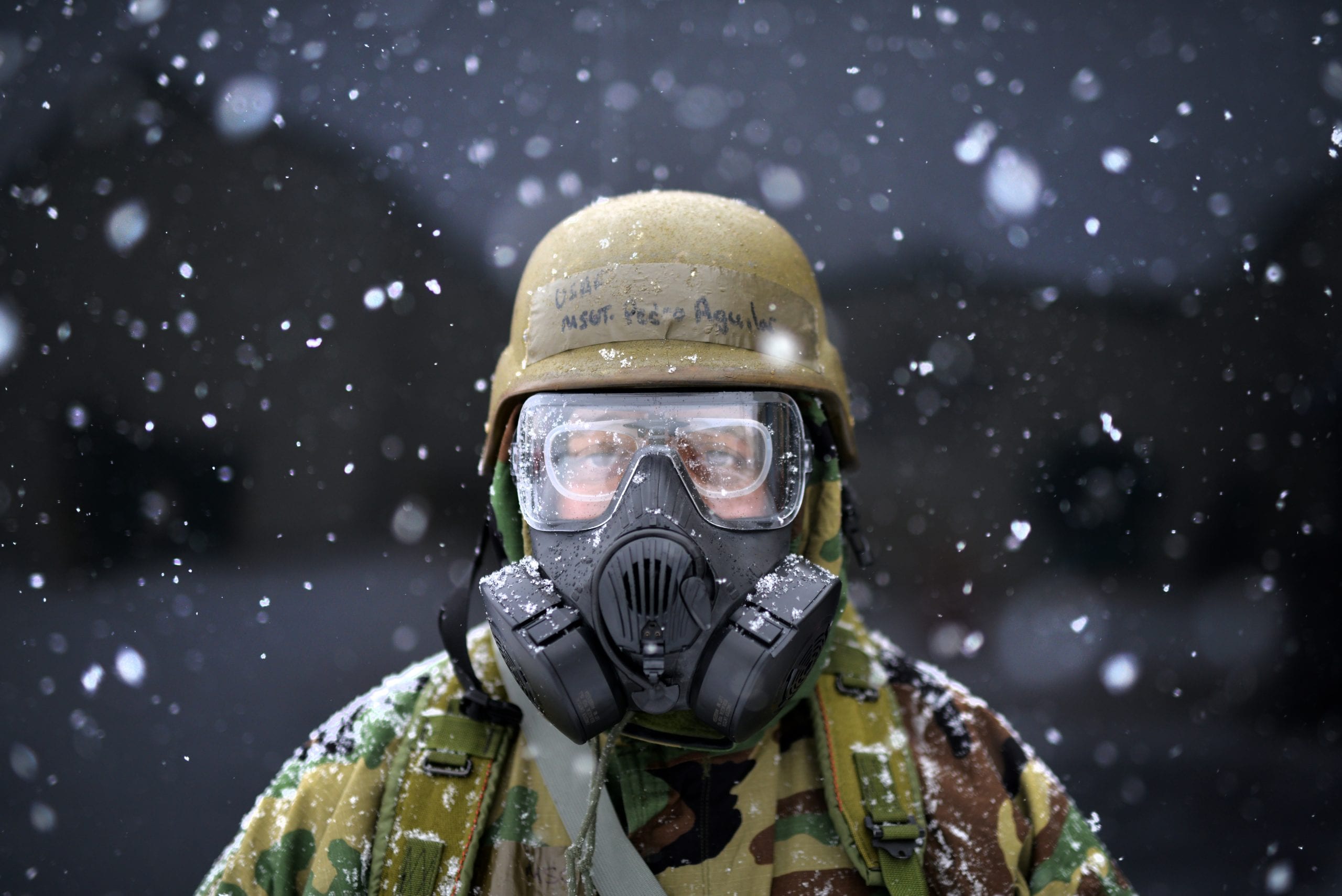Smallpox blankets given to Native Americans. Gas chambers in concentration camps. Chemical weapons in the Syrian War. Russian spies poisoned by a nerve agent.
What do these have in common? Each weaponizes chemical or biological agents.

With today's strained political and foreign affairs climate, there is an ever-looming possibility of war and the use of nuclear weapons. Politicians are incessantly hinting at the need for a stricter nuclear policy to limit nations that have access to nuclear weapons from using them in warfare. When someone utters the word “warâ€, what is the first thing that comes to mind — is it men and women in camo with semi-automatic rifles or military tanks in the desert? The traditional image of war does involve all of that. However, biological and chemical agents used in warfare are more subtle with equally devastating and prolonged effects in their victims. Contrary to what one might assume, biological and chemical agents have long been used in warfare. What makes these atypical weapons so powerful and scary is that they are invisible to the naked eye. While nuclear weapons and the threat of the unmistakable mushroom cloud associated with their use is truly chilling, what most don't realize is that the use of chemical and biological weapons in warfare can be just as frightening, if not more.
Chemical Weapons
Imagine this: a random person on the street shakes hands with you and a microneedle hidden on their hand delivers a nerve agent into your system. Terrifying, right? Recent examples of chemical warfare involving nerve agents are that of a Russian spy and his daughter who were poisoned in March 2018 but survived, and two British nationals accidently exposed to nerve agent residue in June 2018, one of whom did not survive. Both incidents involved the Novichok nerve agent, which was developed by the Russians and theorized to be up to 10 times more potent than the standard nerve agent such as VX or Soman.
The effects on the human body after exposure to a nerve agent are horrifying. Humans have a unique neurotransmitter known as acetylcholine, which is a signaling molecule in the brain whose primarily function is to control muscle and motor function when broken down into its components choline and acetate by an enzyme called acetylcholinesterase. Nerve agents can inhibit the function of this enzyme acetylcholinesterase so that acetylcholine cannot be broken down, subsequently causing an involuntary shutdown of all skeletal muscles. This can then lead to paralysis and even further, respiratory or cardiac arrest and death. If caught early enough, countermeasures can partially reverse long-term effects of nerve agent exposure.
However, those exposed to biological agents that cause infectious diseases like anthrax or smallpox may not be so lucky.

Biological Weapons
The release of biological agents as a form of warfare is terrifying for two reasons: Not only do biological agents cause prolong suffering in their victims, but the attack also cannot be traced back to its source due to delayed biological response after exposure. Contrary to scientific advancement that may suggest that biological weapons are relatively new as a form of warfare, they have been used as early as 600BC in the form of a poisonous herbs. The infamous Black Plague of the Middle Ages was also a form of biological warfare when military leaders realized that bodies of soldiers that succumbed to the infectious disease could be weaponized by hurling them past enemy lines, exposing enemy troops to the lethal plague.
Other examples of biological weapons closer to home are the British giving Native Americans blankets from smallpox patients during the Siege of Fort Pitt and anthrax “letters†mailed to officials in Washington D.C. after the 9/11 attacks. While the latter was eventually traced and a suspect apprehended after five deaths, the smallpox attack caused months of excruciating disease in the exposed population, designating this as one of the worst attacks on Native Americans to date. The population biology behind the use of biological weapons is very different from the use of nerve agents, as the former can be contagious from person to person and can spread through animals or food and water sources.
While chemical and biological weapons are not mainstream assets in modern warfare, they can cause profound and widespread harm and prolonged suffering to victims. In international news as recent as April of this year, Syrian President Bashar al-Assad's supporters unleashed chlorinated chemicals on civilians in Eastern Ghouta, leaving thousands dead or injured. With such obvious use and unequivocal evidence of its devastation, why isn't the use of such agents on the forefront of security policy like nuclear weapons are? Keep an eye out for a post soon regarding chemical and biological weapon policies and regulatory measures!
 Sudeepti Kuppa is a Ph.D. candidate in the College of Pharmacy, and studies how to develop miRNAs into early detection biomarkers for clinically challenging gynecological cancers such as ovarian or metastatic breast cancer. She also got her undergraduate degree at UGA, so she's a Double-Dawg and hasn't regretted staying in Athens for a moment! When she's not in the lab discovering cool new things about cancer, Sudeepti likes to meditate, go to the gym and make sure she gets a healthy dose of TV and spends time with her pet rabbit Fessy (who's basically a dog)! To hear more from Sudeepti you can connect with her on over on Twitter . More from Sudeepti Kuppa.
Sudeepti Kuppa is a Ph.D. candidate in the College of Pharmacy, and studies how to develop miRNAs into early detection biomarkers for clinically challenging gynecological cancers such as ovarian or metastatic breast cancer. She also got her undergraduate degree at UGA, so she's a Double-Dawg and hasn't regretted staying in Athens for a moment! When she's not in the lab discovering cool new things about cancer, Sudeepti likes to meditate, go to the gym and make sure she gets a healthy dose of TV and spends time with her pet rabbit Fessy (who's basically a dog)! To hear more from Sudeepti you can connect with her on over on Twitter . More from Sudeepti Kuppa.
About the Author
- athenssciencecafehttps://athensscienceobserver.com/author/athenssciencecafe/April 17, 2020
- athenssciencecafehttps://athensscienceobserver.com/author/athenssciencecafe/April 12, 2020
- athenssciencecafehttps://athensscienceobserver.com/author/athenssciencecafe/April 3, 2020
- athenssciencecafehttps://athensscienceobserver.com/author/athenssciencecafe/March 30, 2020







